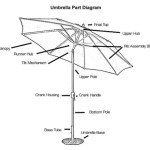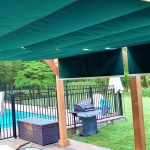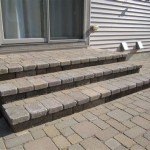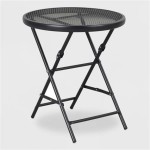What Is The Best Mix For Patio Pointing?
Patio pointing, also known as repointing, is the process of replacing the mortar between patio pavers. Over time, mortar can break down due to weather, foot traffic, and general wear and tear. This can lead to cracks and gaps in the patio, which can create tripping hazards and allow weeds to grow through. Repointing can help to restore the look of your patio and extend its lifespan. However, choosing the right mix for your patio pointing is crucial for achieving a long-lasting and aesthetically pleasing result.
The best mix for patio pointing depends on several factors, including the type of pavers, the climate, and the desired look. There are various types of mortar mixes on the market, each with its properties and advantages. This article will discuss key considerations for choosing the best mix for patio pointing and provide a guide to common pointing mixes.
Factors to Consider When Choosing Patio Pointing Mix
Before selecting a pointing mix, consider these crucial factors:
1. Type of Pavers
The type of pavers you have will influence the best pointing mix. For instance, natural stone pavers, like flagstone or slate, often require a flexible mortar that can accommodate movement caused by the stone's natural expansion and contraction. Concrete pavers, on the other hand, may be better suited to a more rigid mortar.
2. Climate
The climate where you live plays a significant role in choosing the right pointing mix. In areas with extreme temperature fluctuations, a mortar with high freeze-thaw resistance is essential. This ensures that the mortar can withstand repeated freezing and thawing cycles without cracking or crumbling.
3. Desired Look
The appearance of the pointing is also important. You can choose a mortar that matches the color of your pavers for a seamless look or opt for a contrasting color to create a more defined look. Some pointing mixes are available in various colors, while others can be tinted to match your preference.
4. Traffic
The amount of foot traffic on your patio will affect the mortar's strength and durability. High-traffic areas might benefit from a stronger mortar mix that can withstand wear and tear.
Types of Mortar Mixes for Patio Pointing
Here are some common types of mortar mixes used for patio pointing:
1. Type N Mortar
Type N mortar is a general-purpose mortar mix suitable for various applications, including patio pointing. It offers good strength and workability and is a good choice for light-duty projects. However, it may not be the best option for areas with extreme weather conditions or heavy foot traffic.
2. Type S Mortar
Type S mortar is a stronger mortar mix than Type N, offering higher compressive strength. It is ideal for areas with heavy foot traffic and can withstand more wear and tear. While a good choice for durability, Type S mortar may be more challenging to work with than Type N.
3. Type M Mortar
Type M mortar is a high-strength mortar mix, providing the most compressive strength among the three types. It is well-suited for demanding applications and can be a good option in areas with extreme weather or heavy traffic. However, its high strength can make it more difficult to work with and potentially lead to cracks if applied improperly.
4. Polymer Modified Mortar
Polymer-modified mortar is a type of mortar that contains polymers that enhance its flexibility, adhesion, and water resistance. This makes it an excellent choice for pointing pavers in areas with extreme temperature fluctuations or where movement is expected. It can also contribute to a more durable and watertight joint.
5. Epoxy Mortar
Epoxy mortar is a very strong and durable type of mortar that is often used in high-traffic areas or for pointing pavers with irregular surfaces. It is highly water-resistant and can withstand extreme temperatures. However, epoxy mortar can be challenging to work with and may require professional installation.
Choosing the Best Mix for your Patio Pointing
Ultimately, the best mix for your patio pointing will depend on your specific needs and the factors discussed above. Consider the type of pavers, the climate, the amount of foot traffic, and your desired look when making your decision. Consulting with a professional can help you make the right choice and ensure your patio pointing project is a success.

Jointing And Pointing For Stone Paving Dry Grouting Pavingexpert

How To Repoint Paving Slabs

What Is The Best Pointing Natural Stone Timber

Patio Slab Pointing With Mortar 3 Diffe Methods

Julian Cas S Diy Blog Archive Repointing Patio Slabs How To What Use Where Buy

How To Mix Up Mortar For Patio Pointing In 6 Mins

5 Types Of Paving Grouts To Fill The Gaps Between Pavers
Patio Re Pointing Mix Mig Welding Forum

Pointing A Patio 5 How To Tips

Pointing And Sealing N Stone Edecks Blog
Related Posts








